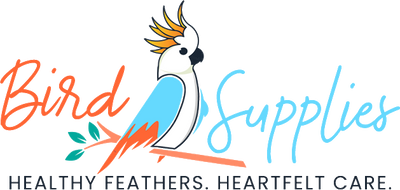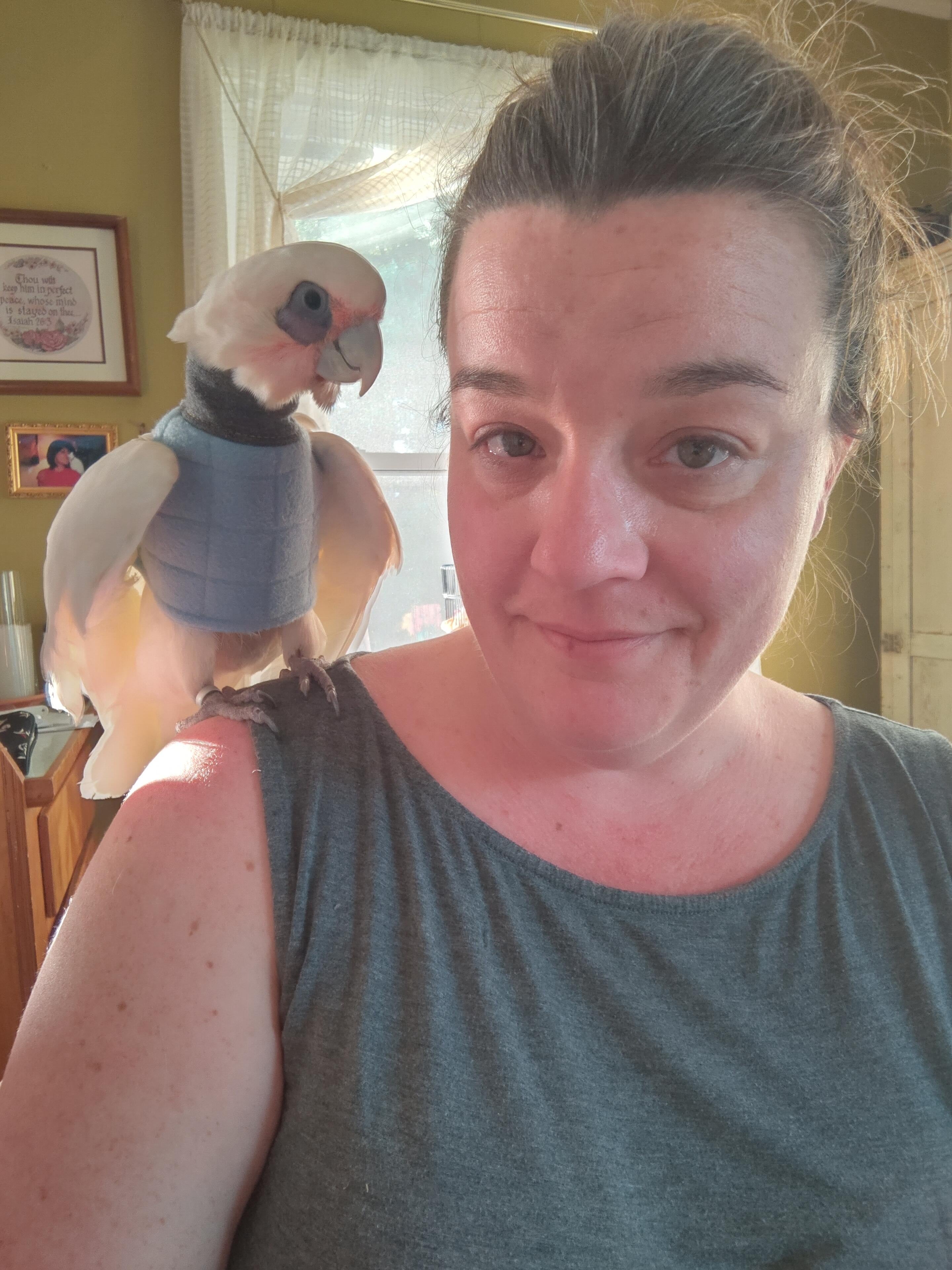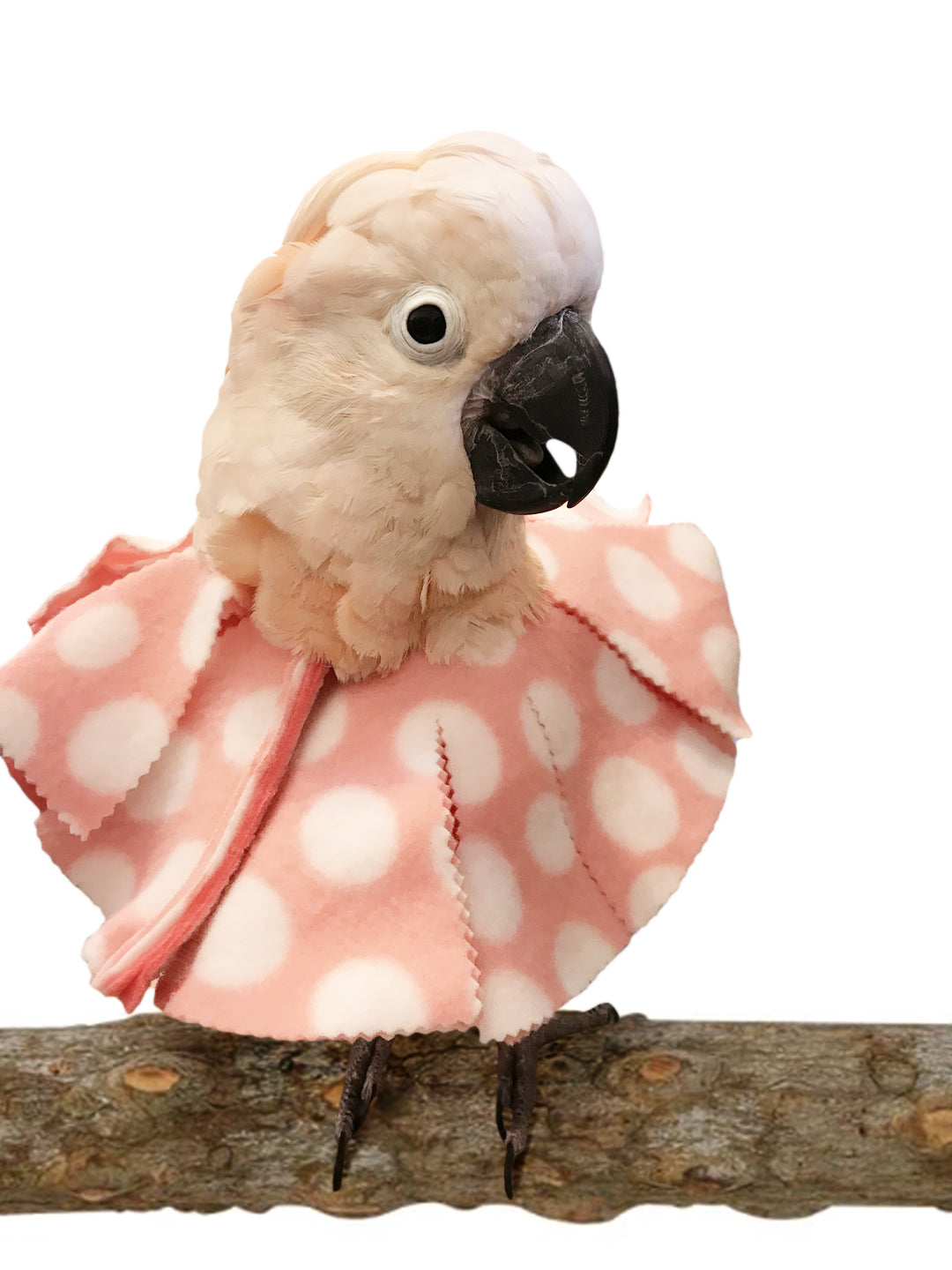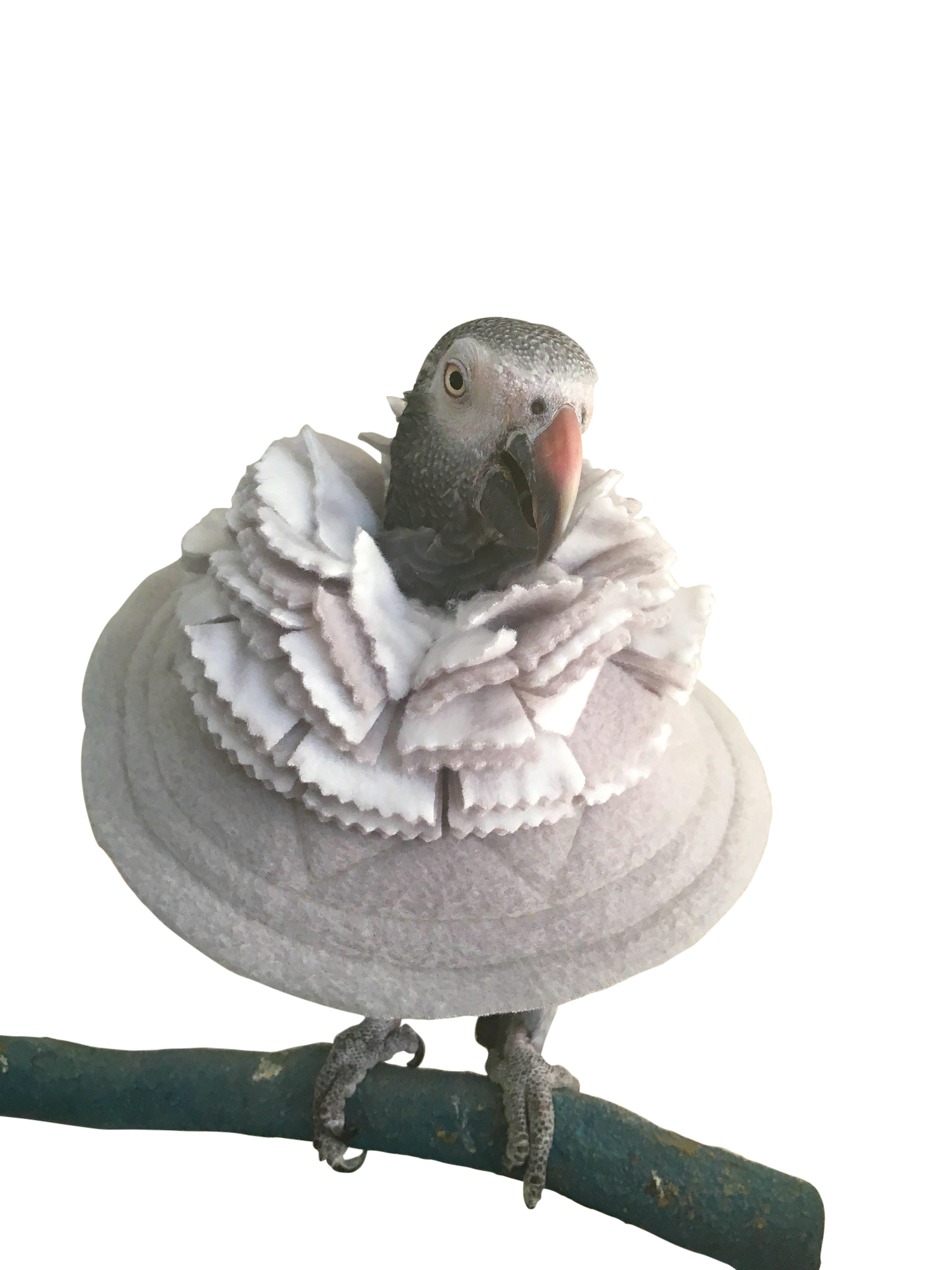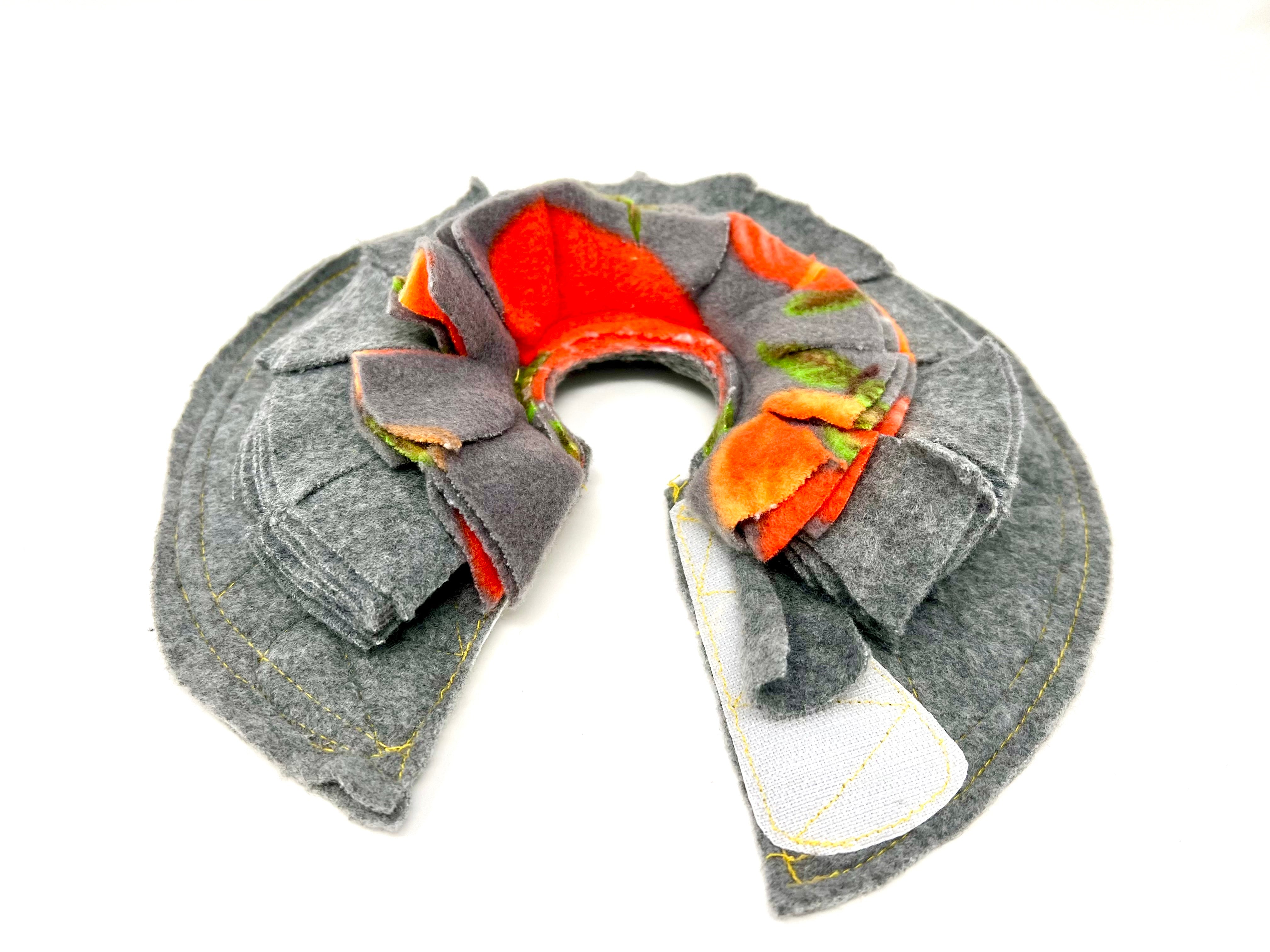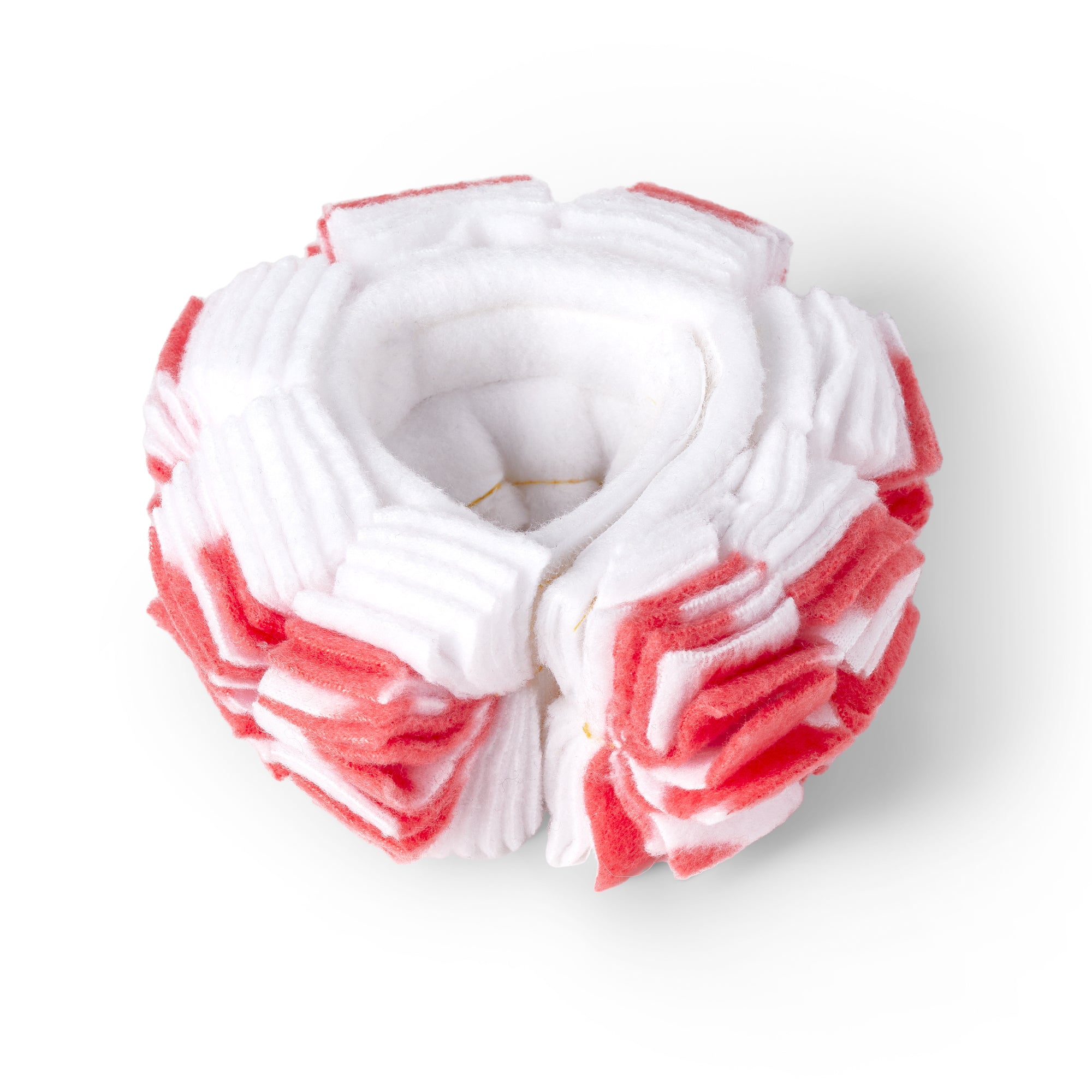Table of Contents
- How does a bird lose trust?
- 3 ways trauma affects the brain
- 1. Study the behavior to get out of the cycle
- 2. Start with environmental safety
- 3. Safely confine a fearful bird so that it can't hurt itself
- 4. What is meant by counterconditioning?
- 5. When can I wean my bird from the rehabilitation enclosure?
Does your bird go into a panic attack whenever you get close to it? Does it start screaming or thrashing around whenever you try to handle it? We often hear about these behaviors with rescued and re-homed birds. In this blog post I'll discuss 5 ways to tame a phobic, fearful bird.
When we think about post-traumatic stress disorder (PTSD), many of us don't include birds. But, recent studies show that many birds show some of the same signs of PTSD that people do. They develop trauma from a variety of circumstances that come out in excessive fear and anxiety, and protective aggression. These symptoms can persist over years if left untreated. Find out how you can help your abused or rescue bird recover from their trauma in as little as one year.
How does a bird lose trust?
A scared bird doesn’t feel safe, so its main priority will is to simply survive. If a pet bird has learned that it can’t trust people, it won’t let anyone get close for fear of getting hurt again. Parrots are sensitive animals. Here are just some issues that make a parrot lose trust:
- Lack of routine handling and socialization
- Using force or fear in an effort to train or "redirect" unwanted behavior
- Loud noises & bright lights
- Repeatedly getting injured, especially as they are flapping around when scared
- Changes in their environment
- Other animals that are perceived as predators
- On-going pain
- Feeling like there is no escape
- On-going poor nutrition
- Re-homing, loss of loved one, grief
If a pet bird has been neglected or abused by a previous owner, chances are it may not feel safe with you or even worse, it will develop PTSD. These fear based phobia's result in using "fight or flight" behaviors as a basic survival mechanism.
Let's look at these fight or flight behaviors a little more closely. Fight, of course, looks like aggression. Screaming, lunging and biting. The bird does this to get you to back off and leave it alone.

Infographic by Diane Burroughs, LCSW
Other birds may attempt to escape. Ordinarily, a bird would fly off to escape if it could. But, if it can't fly off, it might roll about, thrash around the cage, or flap around in desperation to try to get away. Both fight and flight create a traumatic interaction with your bird.
In other words, the birds phobic response makes it even more phobic.
3 ways trauma affects the brain
Our companion birds aren't afforded this luxury. They don't have the safety of a flock to keep them safe, and most likely cannot fly away to safety, even if they've been seriously mistreated.
Traumatized avian brains are constantly working overtime to cope with traumatic events. The amygdala, hippocampus, and cortex work overtime continuously releasing stress hormones such as cortisol and adrenaline.
All of their energy goes to trying to survive. Their body never gets the chance to heal from their fears. The bird's quality of life diminishes as they become more afraid and less confident leading to a perpetual cycle of anxiety.
Adrenaline and cortisol cause high stress levels in birds. These two hormones tell a bird when to prepare for fight or flight; but when they are constantly activated, it can lead to behavioral problems like phobic panic or aggression. What are some steps we can take to reduce our pet bird's stress level?
Whenever a bird is in a fight or flight mode, it can hurt itself or hurt you.
There are some of the medications that vets can prescribe for anxious birds. But, we can also help them by ensuring their safety, improving health and wellbeing, and building trust. Here are five ways to tame a fearful bird.
1. Study the behavior to get out of the cycle
I always suggest that the first thing you do is a functional behavior assessment (FBA) before you embark on desensitization training. This is where you take a week or two to carefully study the behavior before you attempt to change it.
An FBA will help you
- Define the behavior in clear and measurable terms
- Understand what the trigger is
- Understand what consequences maintain the behavior
- Determine if there are other things that influence the behavior
- Help you understand why your bird behaves like this
2. Start with environmental safety
Birds need safety, privacy and quiet time when they are stressed just like we do. So make sure you provide them with a quiet space where they can get away from people, other pets or anything else that might stress them out.
Next, work on providing your bird with a better diet that supports brain health. Improving sleep helps a lot too. Bird's need 10 - 12 hours of sleep a night. That is when they rejuvenate themselves. Good old sleep goes a long way toward healing the brain and body.
And, finally, mild exercise helps the body get rid of excess adrenaline and cortisol. Plus, it helps the body heal.
As with anything new, changes need to be made in baby steps for the first several months or more.
3. Safely confine a fearful bird so that it can't hurt itself
If your bird is flapping around the cage and putting itself at risk of an injury, consider making a "rehabilitation enclosure" for it. Phobic fear usually involves behaviors like thrashing about the cage, frantically flapping about, or rolling over as if they are giving up.
Generally, these behaviors are the birds way of telling you to "back-off!"
Why a rehabilitation enclosure?
Rehab enclosures serve to keep your bird safe. When bird thrashes about in a traditional cage it can break wing feathers, bruise its wings, and even experience worse injuries.
These painful injuries can turn into a self-fulfilling prophecy where your bird fears getting injured as much as it is phobic of people. In this situation, a rehabilitation enclosure can be invaluable.
Your bird soon learns that it is safe inside of the enclosure. You can cover as much or as little of the enclosures as needed to help your bird feel safe. A bird that feels safe can stop the panic attacks that constantly dump tons of cortisol and adrenaline into the bloodstream.

How to make a rehabilitation enclosure
1. Get a large clear bin with a lid. Drill some air holes in the lid. Place the bin in a relatively quiet area. We like this large one by Sterilite.
2. Line the bottom of the bin with paper and towels. Add some perches and a food and water bowl. Place your bird inside of the container.
3. If your bird can tolerate it, add some foraging toys, like pellets in a paper bag and other items that your bird can chew or shred. Chewing and and shredding use up excess energy and foraging can calm your bird. The idea is to make sure that your bird is comfortable and that it can engage in natural parrot behaviors.

4. Cover up to half of the rehabilitation enclosure during the day and fully at night (make sure that you've drilled air holes in the lid). Daytime coverage helps provide an additional level of safety while night-time coverage promotes healing sleep.
5. Once your bird starts to settle down you can work on counterconditioning it.

4. What is meant by counterconditioning?
One of the best ways to handle a phobic bird is to avoid triggering the behavioral response in the first place.
Once the body has started to get rid of the cortisol and adrenaline, you can start some behavioral training.
Pamela Clark talks about thinking about your relationship with your bird like a bank account. In other words, positive interactions that build trust are like deposits while negative interactions that result fear are like a withdrawal.
If your bird has experienced too many relationship withdrawals it can become fear-based or phobic It needs to have positive deposits to learn to trust again.
A great way to build "trust" deposits is to figure out what motivates your bird. Early on, a phobic bird is reinforced by escaping human interaction. But as trust builds you can add new reinforcers, like favorite treats, fun interactions, and the like.
Start rehabilitation by using desensitizing strategies.

Infographic by Diane Burroughs, LCSW
Desensitizing is when you slowly expose your bird to what terrifies it from a safe distance. You have to identify what triggers the fear in the first place and that's what you desensitize the bird to.
In order to figure out your individual birds triggers, you'll need to learn what parrot body language looks like when it is getting triggered.

Infographic by Diane Burroughs, LCSW ©2021
The first sign that a bird is getting triggered its often in their eyes. Then, the bird continues its startled look and backs away. And, finally, it tries to escape. Once you can tell the very early phases of getting triggered, you can figure out what the triggering event is.
Desensitization starts with a very minimal exposure to what it is afraid of from a safe distance. And, it progresses to more exposure and closer proximity as the bird tolerates it.
 |
Work slowly and be patient with your bird to avoid triggering the phobic behavior response. Getting triggered will only set training back. |
A phobic bird often just wants to be left alone. It wants to escape human interaction.
Say your bird begins thrashing about when you get closure than 8 feet from it. Start desensitizing it at 10 feet - or at whatever distance your bird starts pacing. When the pacing stops, walk away. Offer your bird the "escape" that it desires.
 |
The second that your anxious bird calms down, quietly walk away. |
It is very important that this process be systematized with a formal plan as to how much exposure your bird will be able to handle at each step of the process. This is because it is critical that your bird is NOT triggered at all. Your bird should feel as comfortable as possible during every minute of this process.
An example of a systematic approach might look like this:
- 10 ft.
- 8 ft.
- 7.5 ft.
- 7 ft.
- 6.5 ft.
- 6 ft.
- 5.5 ft.
- 5 ft.
- 4.5 ft.
- 4 ft.
- 3.75 ft.
- 3.5 ft. and so on until the bird accepts you being just a few inches away.
Notice that you get closer and closer, the incremental changes become smaller. You can desensitize for more than just distance. You can desensitize for duration, loudness, new things or whatever evokes the fear.
As you can imagine, when you break the desensitization into small increments, training a phobic parrot can take several months. It is important to stay motivated. Reward yourself with each little gain because your work will pay off in the long run. Imagine the bond that you and your bird will develop over time!
As your bird tolerates experiences that once triggered a panic attack, you can start
5. When can I wean my bird from the rehabilitation enclosure?
The short answer is that you can wean your bird from the rehabilitation enclosure when it is able to remain safe in your presence.
To keep the momentum going, begin teaching your bird safe replacement behaviors. That is reinforcing behaviors that you'd like to see more of like playing, foraging, normal preening, and other grooming behaviors. Also, begin using everyday rewards like favorite treats, play-time, dancing with your bird, and others.
Finally, be on the lookout for old behaviors coming back. It is not uncommon for past behaviors to reoccur during times of stress. If you start noticing that your bird is regressing, don't hesitate to begin retraining again.
Related Posts:
How to deal with a biting parrot
References:
Clark, P. Teaching a fearful parrot to step up.
O'Heare, J. Resolving fears, phobias, and anxieties: An errorless differential reinforcement approach for professionals. BehaveTeh Publishing, Ottawa, Canada. 2018.
Diane Burroughs, LCSW is a licensed psychotherapist trained in ABA therapy techniques. She specializes in avian anxiety disorders and is certified in Nutrition For Mental Health. Diane has written a number of bird behavior books and she offers behavior consultations. She's developed a range of UnRuffledRx Science-backed Parrot Wellness Supplies.
Diane's products have been featured in the Journal of Avian Medicine and Surgery and at Exoticscon, a conference for exotic pet veterinarians. Her bird collars & supplements are stocked in avian vet clinics and bird stores throughout the US. With over 30 years in the field of behavior, Diane has created thousands of successful individualized behavior plans that help pets thrive.
TAGS: #phobicbird #parrotphobicbehavior
SHARING IS CARING! PLEASE SHARE ON YOUR FAVORITE SOCIAL MEDIA NOW!
